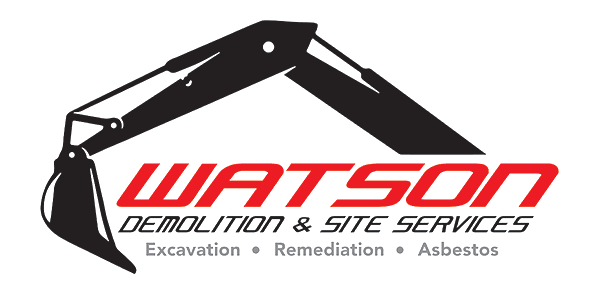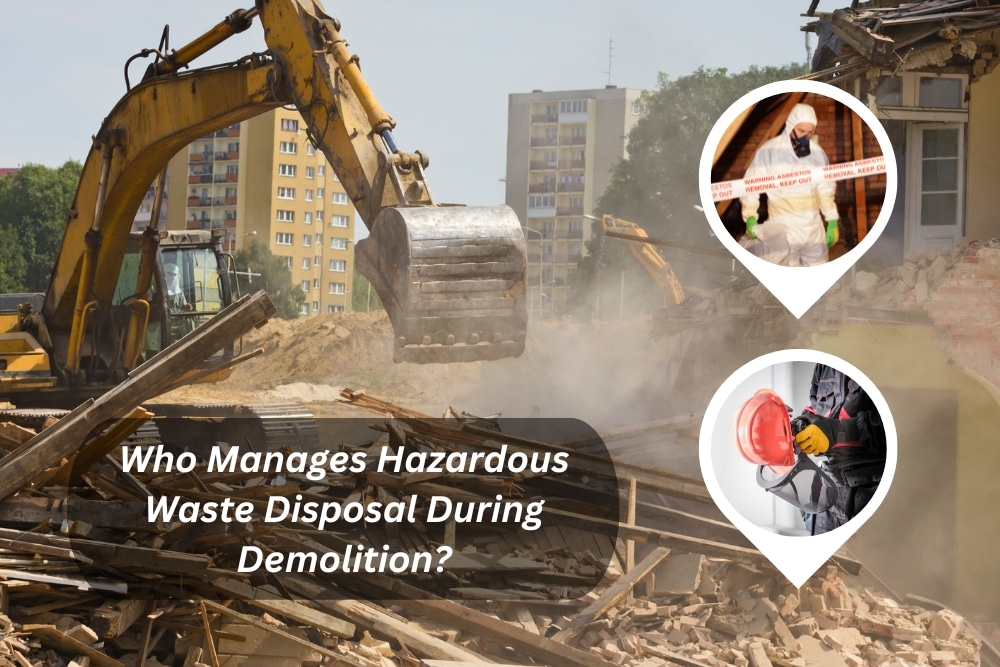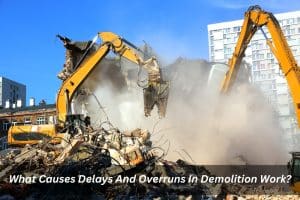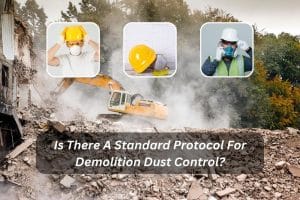Demolition projects can be complex undertakings, involving the removal of structures and the disposal of various materials, some of which can be hazardous to the environment and public health. Ensuring the safe and responsible disposal of hazardous waste during demolition is of paramount importance. In this article, we’ll explore the key aspects of managing hazardous waste during demolition, focusing on the role of a demolition waste management plan.
What is a demolition waste management plan?
A demolition waste management plan (DWMP) is a comprehensive document that outlines how hazardous waste will be handled and disposed of during the demolition process. Think of it as a roadmap that guides the demolition project from start to finish, with a particular focus on waste management.
Who bears the responsibility for overseeing the disposal of hazardous waste during demolition?
The responsibility for managing the hazardous waste typically falls on the shoulders of the project manager or the contractor overseeing the demolition project. This individual plays a crucial role in ensuring that all aspects of the demolition, including waste disposal, adhere to local regulations and environmental standards.
What should be included in a demolition waste management plan?
A well-structured DWMP should encompass several critical elements to ensure effective hazardous waste disposal. Here are some key components that should be included:
- Hazardous waste identification:
The plan must identify and categorise all hazardous materials that will arise during the demolition. This includes items like asbestos, lead-based paint, mercury-containing devices, and more. A thorough inventory of these materials is essential to plan their safe removal and disposal.
- Legal compliance:
Compliance with local, state, and federal regulations is paramount. The DWMP should detail how the project will meet legal requirements, obtain necessary permits, and address any potential environmental concerns.
- Site-specific procedures:
Each demolition site is unique, and the DWMP should reflect this. The plan must outline specific procedures for handling hazardous waste, taking into account the site’s characteristics, including its location, size, and the type of structures undergoing demolition.
- Waste handling and transportation:
The plan should specify how hazardous waste will be collected, packaged, labelled, and transported to approved disposal facilities. Proper containment and labelling are crucial to prevent accidents and ensure the safety of workers and the public.
- Emergency response:
In the event of unexpected situations or emergencies related to hazardous materials, the DWMP should provide guidelines on how to respond swiftly and effectively. This may involve protocols for addressing spills, fires, or accidents.
- Training and safety measures:
The DWMP should detail the training and safety measures in place to protect workers involved in the demolition and waste disposal processes. Adequate training ensures that employees can identify and handle hazardous materials safely.
- Waste disposal facilities:
Specify the approved waste disposal facilities where hazardous materials will be transported. Ensure that these facilities have the necessary permits and capabilities to handle and dispose of the waste properly.
How to implement a demolition waste management plan
Developing a comprehensive DWMP is just the first step. To ensure its successful implementation, follow these steps:
- Communication and training: All team members engaged in the demolition project must be thoroughly educated about the DWMP. Training sessions should be organized to guarantee that everyone comprehends their roles and responsibilities and knows what to do with construction and demolition wastes.
- Monitoring and oversight: Regular monitoring and oversight are crucial to ensuring that the plan is being followed. Appoint a designated individual or team to oversee the waste management aspects of the project.
- Documentation: Keep thorough records of all hazardous waste handling and disposal activities. Proper documentation is essential for legal compliance and accountability.
- Adherence to schedule: Stick to the timeline outlined in the DWMP. Delays can lead to increased risks and costs associated with hazardous waste management.
- Flexibility: Be prepared to adapt to unforeseen challenges or changes in circumstances. The DWMP shouldn’t serve as a rigid document; instead, it should function as a flexible guide that you can adjust as necessary.
Tips for developing a successful demolition waste management plan
Developing an effective DWMP is critical to ensuring the safe disposal of hazardous waste during demolition. Here are some tips to help you create a successful plan:
- Start early:
Begin planning for hazardous waste management during the early stages of project development. This allows for better integration of waste management into the overall project plan.
- Engage experts:
Seek advice from experts in hazardous waste management and environmental regulations. Their knowledge can help you navigate complex compliance requirements.
- Conduct a site assessment:
Thoroughly assess the demolition site to identify potential hazards and challenges. This will inform the development of site-specific procedures in the DWMP.
- Prioritise Safety:
Safety should be the top priority throughout the demolition process. Make sure you provide all workers with proper training and equip them with the necessary safety gear.
- Budget appropriately:
Allocate sufficient resources to hazardous waste management in your project budget. This includes costs for waste removal, transportation, disposal, and compliance.
- Stay informed:
Keep abreast of any changes in environmental regulations and best practices for waste management. Regularly update your DWMP to reflect these changes.
- Document everything:
Accurate record-keeping is essential. Document all waste-related activities, from identification to disposal, to ensure transparency and compliance.
- Communication:
Foster open communication among all project stakeholders. Encourage reporting of any issues or concerns related to hazardous waste.
Conclusion
Proper hazardous waste disposal during demolition is not only a legal requirement but also a crucial step in protecting the environment and public health. Developing and implementing a comprehensive demolition waste management plan is the key to achieving this goal. By identifying hazardous materials, adhering to legal requirements, and following safe handling and disposal procedures, you can ensure that your demolition project proceeds smoothly and responsibly. Remember, a well-executed DWMP is the cornerstone of a successful demolition project and a testament to your commitment to environmental stewardship. So, take the time to plan and manage hazardous waste effectively, and your demolition project will be a safer and more responsible endeavour.
At Watson Demolition & Site Services, we uphold the principles of responsible demolition and effective hazardous waste management, as discussed earlier. Our unwavering commitment is to serve as your reliable partner for all your demolition requirements. With our extensive expertise in ensuring the secure disposal of hazardous materials, we place paramount importance on environmental sustainability and public safety.
Whether you’re embarking on a demolition endeavour, whether it’s substantial or more modest in scale, we extend a warm invitation for you to reach out to us. Let’s collaborate to forge a future that’s safer, cleaner, and more responsible for our communities. Don’t hesitate to get in touch with Watson Demolition & Site Services today, as we embark on the first steps toward responsible demolition together. Your project deserves the utmost quality, and so does our precious planet.



